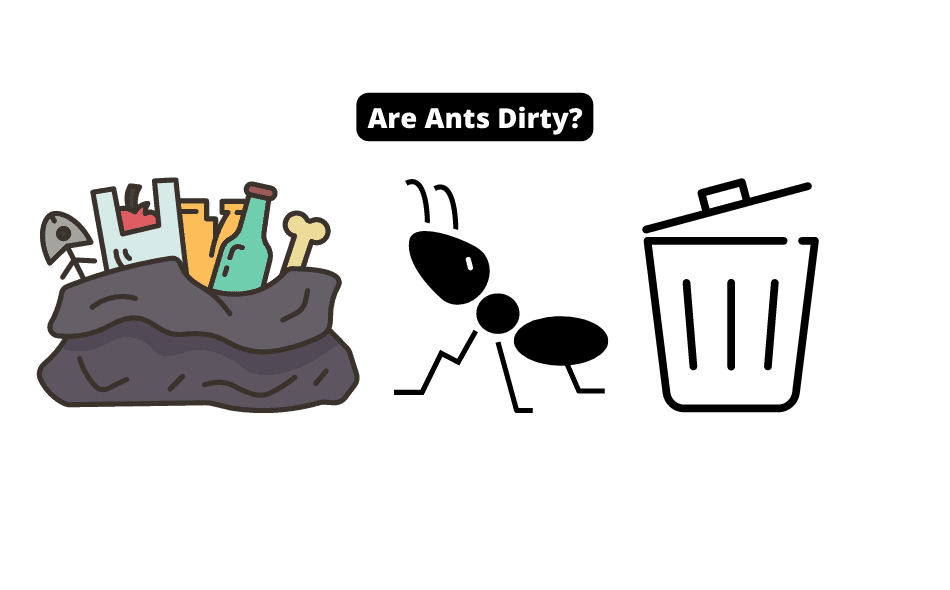Ants are generally clean insects. But, due to the nature of their food-searching activities, they get dirty.
Ants may not be as dirty as cockroaches and flies, but occasionally, they are vectors of foodborne diseases when not clean.
Ants forage for food in trash cans, garbage, and other dirty places.
In these moments, they pick, carry, and can transmit germs and other disease-causing pathogens.
If they come into contact with clean food and water after visiting unclean or contaminated places, they transfer the germs to the food or water.
Consumption of such food can cause foodborne illnesses.
While all that seems negative, it doesn’t tell the full story of these creatures – below, we dive deep into the world of these so-called “dirty creatures”
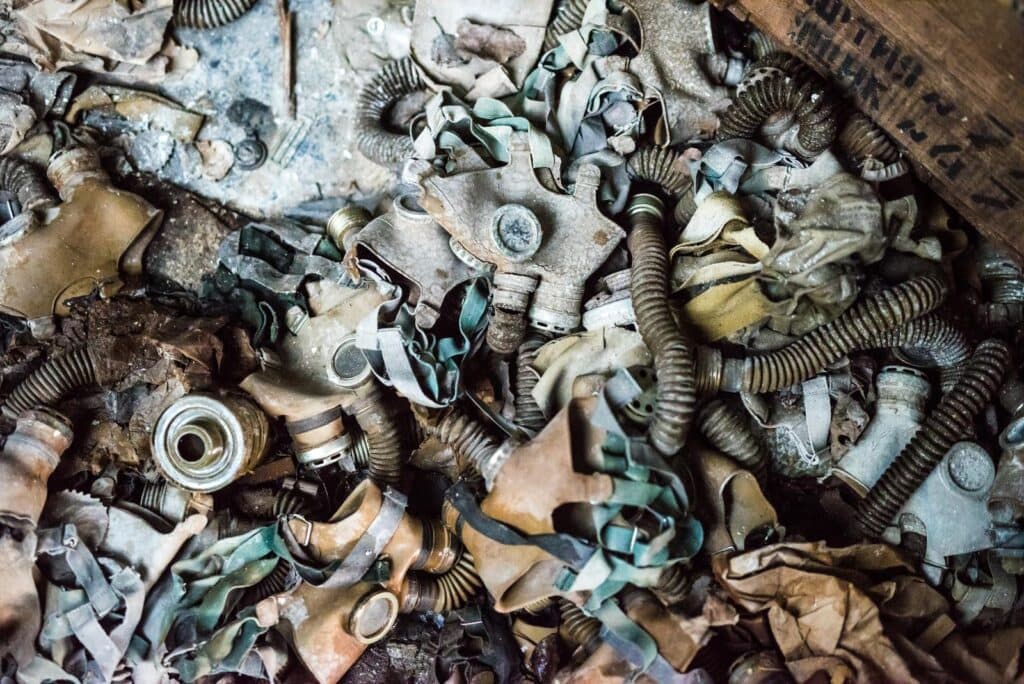
How clean or dirty are ants?
Among insects, ants are considered among the cleanest organisms.
The cleanliness of the antenna, in particular, is critical.
Why? Ants depend on the antenna for all communication.
A dirty antenna would hamper most of the ant’s activities, including food searching, finding the way to the nests, identifying nests mates, and alerting other ants about enemy intrusions.
As such, ants clean their antenna and the body routinely.
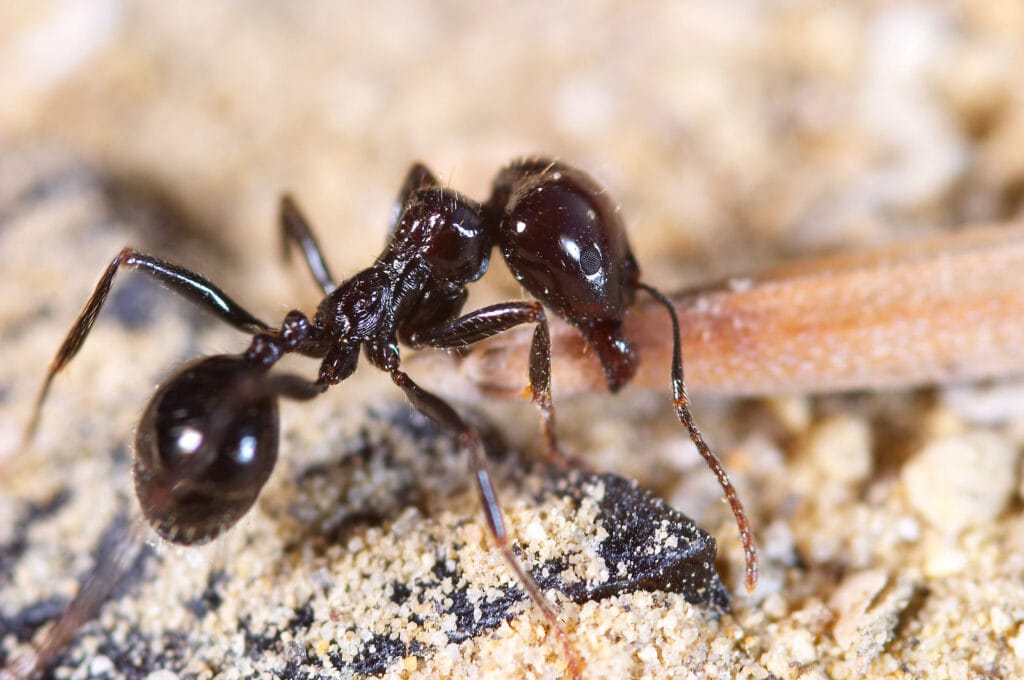
They have an elaborate cleaning mechanism.
They use brush-like hair on the front legs to clean the antenna and remove dirt and pollen.
The ants also clean their exoskeleton. They secrete and apply saliva that cleans and oils their bodies. The saliva-like fluid also removes fecal contaminants.
To ants, cleanliness is a matter of survival. For that reason, these critters remove the bodies of dead ants from the nests and deposit them at a common burial site at the nest’s entrance.
Doing so prevents pathogens from the dead ants from infecting the colony and prevents the growth of fungus or microbes that thrive on the dead matter from accumulating inside the nest.
Despite all these hygienic acts, ants are disease agents with the potential to transmit harmful germs to humans.
How do ants contaminate food?
Ants may not be prolific pathogen transmitters like flies and mosquitos but are pests able to transmit foodborne diseases and other infections.
Worker ants are scavengers that visit all types of food sources.
Ants typically forage in rotting foods, garbage, or trash cans. Ants also get nutrients from bathrooms.
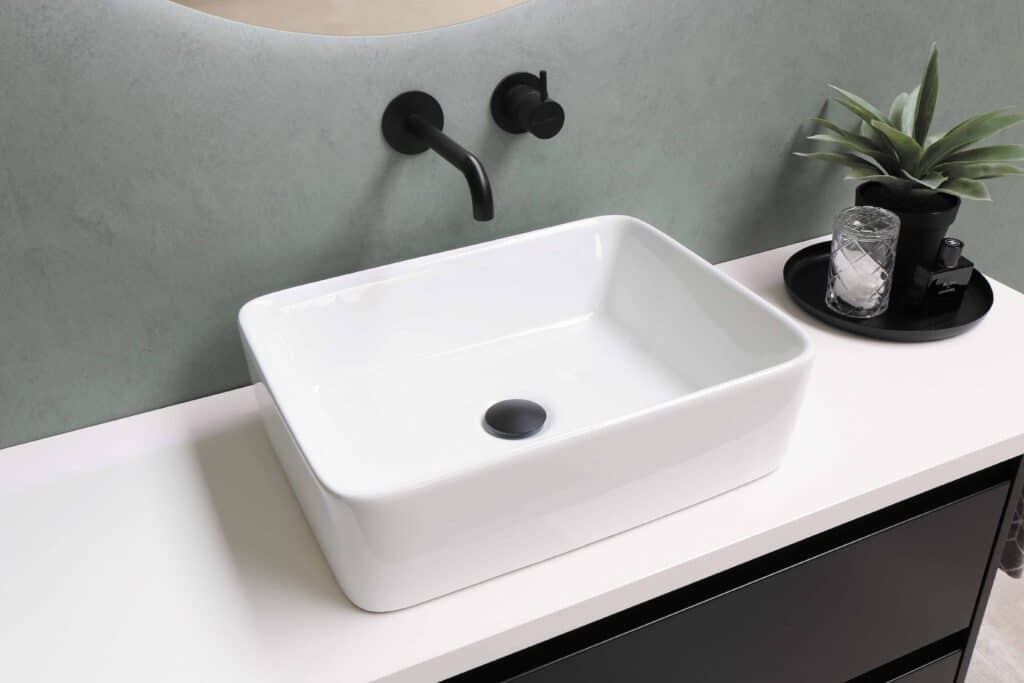
They collect tiny skin particles from the human body that fall off as we clean ourselves. Ants even extract nutrients from urine.
When they visit contaminated food sources, they can pick bacteria or fungi with their antenna or carry the pathogens on their skin. They infest clean food when they come in contact with it.
Scientific studies have found traces of fecal matter on the ant’s exoskeleton.
Laboratory analysis found various illness-causing germs on ants’ bodies.
One study found bacteria such as E. Coli, clostridium, shigella, and Salmonella on ants’ bodies.
Which ants carry diseases?
All ants that invade food are potential carriers of germs. As such, all sugar ants in your house that search for food in the kitchen are a threat.
However, certain ants can bring germs to the food more than others.
Here are some examples;
Pharaoh ants
These small stubborn ants are commonly found in the garbage around hospitals, home care, and hotels. Pharaoh ants (Monomorium pharaonis) have been found in hospital dressing rooms.
Pharaoh ants are attracted to burn wound fluids.
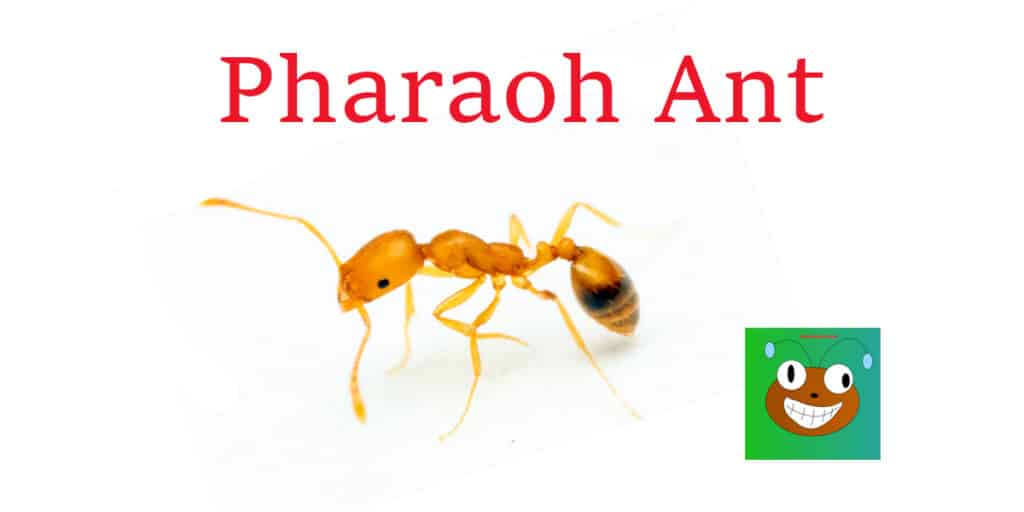
They transmit infections from patient to patient by invading open wounds.
Thus, they pose a serious infection threat at wound dressing units in clinics and hospitals.
They also contaminate food by transferring the dirt on their bodies collected from dustbins to food.
References:
White-Footed Ant
The white-footed ant is a species of odorous house ant. It’s a difficult ant to control hence its scientific name, Technomyrmex difficilis.
It’s a common indoor ant known to visit kitchens and bathrooms.
In one study that studied microbiological analysis of ants, this type of ant was found to carry harmful microorganisms and fecal matter.
Implying that the white-footed ant is a potent carrier of pathogens that can cause various diseases.
Tropical Fire Ants
In the same study that confirmed the presence of germs in white-footed ants, tropical fire ants were found to be carriers of microbes and germs.
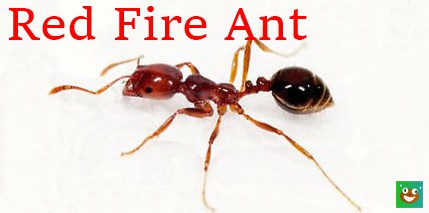
Again, if these ants come into contact with human food, chances are high that they will transfer foodborne germs to the food.
References:
https://www.ncbi.nlm.nih.gov/pmc/articles/PMC6604928/
Black Ants (Monomorium minimum)
In yet another study, indoor black ants were found to have higher percentages of pathogenic bacteria than their outdoor counterparts.
Depending on the location where the study ants were collected, the exoskeleton of indoor black ants had E. Coli, Shigella sonnei, Acinetobacter Lwoff, Serratia marcescens, and Salmonella Choleraesius.
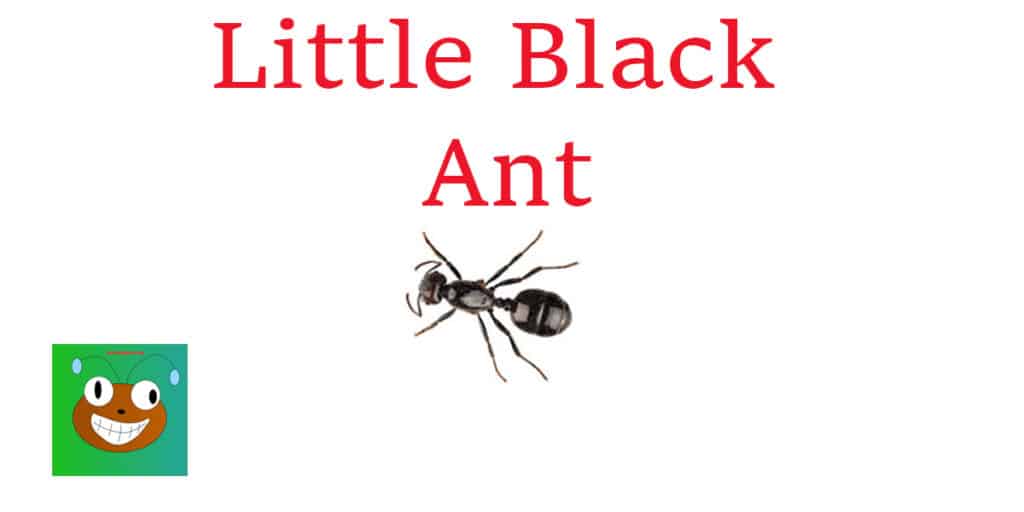
Do ants that bite transmit diseases?
Ants that bite do not transfer disease-causing pathogens like other pests, such as mosquitos.
Rather, biting or stinging ants inject ant poison, which, even though dangerous, does not cause diseases.
The possibility of disease transmission caused by an ant bite is minimal.
However, bites by ants like fire ants, bullet ants, or acrobat ants can be very painful and life-threatening.
But these side effects or allergic reactions are due to ant poison passed via the bite or stinger but not because of germs or pathogens the ant may have picked up in its foraging activities.
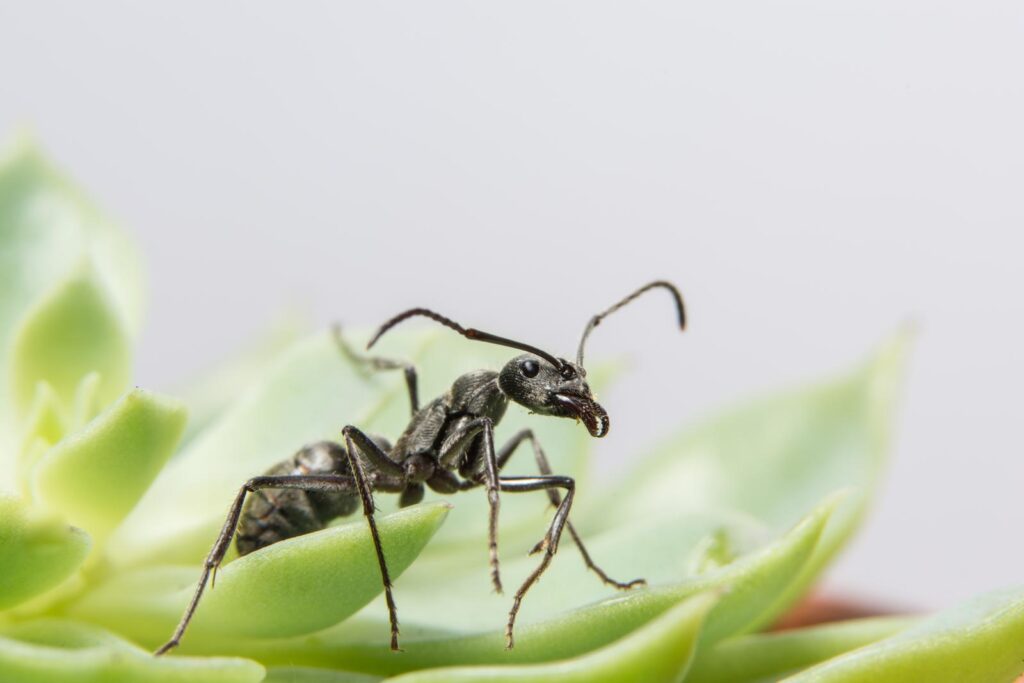
How can I avoid dangerous ant contamination?
Although ants do not pose a disease risk at the same levels as flies and other pests, every typical homeowner or business manager should be prudent in controlling ant infestation.
You can take several measures to avoid ant contamination.
Food Preparation
Always ensure cleanliness when preparing food. Thoroughly wash utensils visited by ants before using them. Also, ensure food is fully cooked to kill all germs that may be passed to the raw food stuff by the ants.

Repair ant’s entry points
Ants visit homes looking for food and water. They pick up germs during their errands. By sealing all visible entry points the ants use to access indoors, you will prevent them from bringing bacterial or other harmful microorganisms into the house.
Use of chemicals
All ants live in colonies. Some ants are stubborn to control despite how clean your kitchens and pantries are.
You can use various chemicals to eradicate the ants and prevent contamination.
Ant pesticides are available as instant sprays, which kill ants on contact. Preferably, use baits. Baits eliminate entire colonies, including the queen.
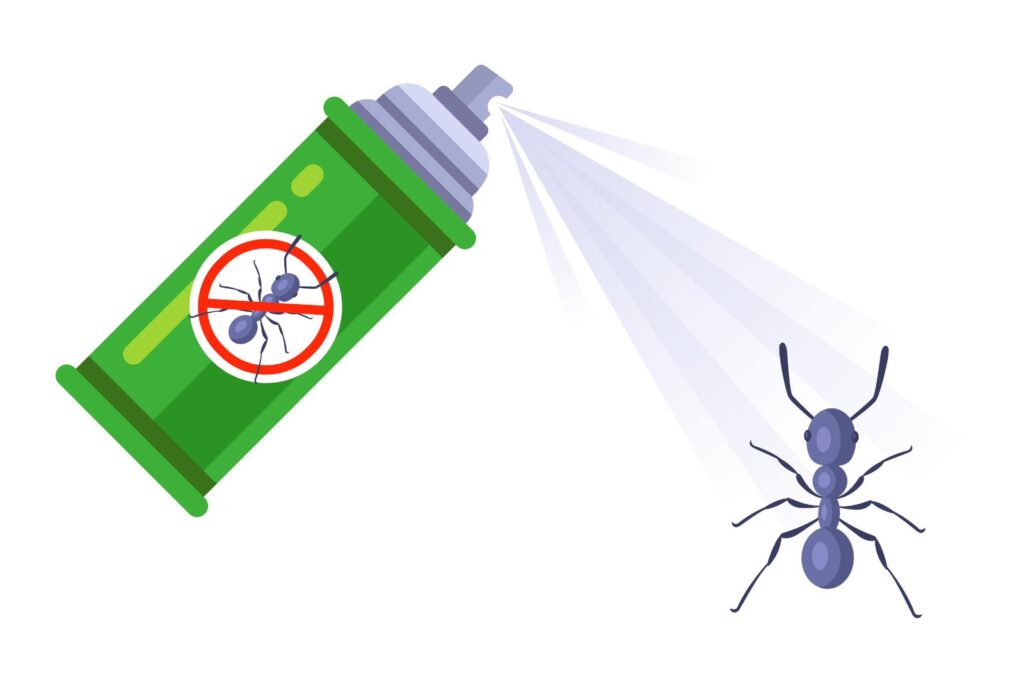
Final Thoughts on whether ants are dirty
Ants are relatively clean compared to other insects.
Thus, disease transmission caused by ants is not as high as that of vectors such as flies, fleas, mosquitos, and cockroaches.
Therefore, humans do not usually think much about the possibility of ants acting as vectors of foodborne diseases.
However, ants are scavengers that forage for food in places where the presence of microbes and bacteria is high. They search for food in dirty places like trash cans and garbage.
In the process, they carry pathogens on their antenna and body. If a dirty ant comes into contact with human food, it can transmit harmful organisms to the food, increasing the risk of infesting humans.
Scientific studies have found dirt, including fecal matter, disease-causing bacteria, fungi, and microbes on the skins of ants. Thus, these critters can transmit diseases via food or other means.
A case in point is the pharaoh ant. It craves burn wound fluids. Thus, it’s commonly found in hospital dressing rooms, where it can infect patients’ wounds with germs it may carry on its body.
Conclusively, even though humans do not usually think too much about the possibility of ants transmitting disease-causing microorganisms, evidence shows ants are vectors of various illnesses.
